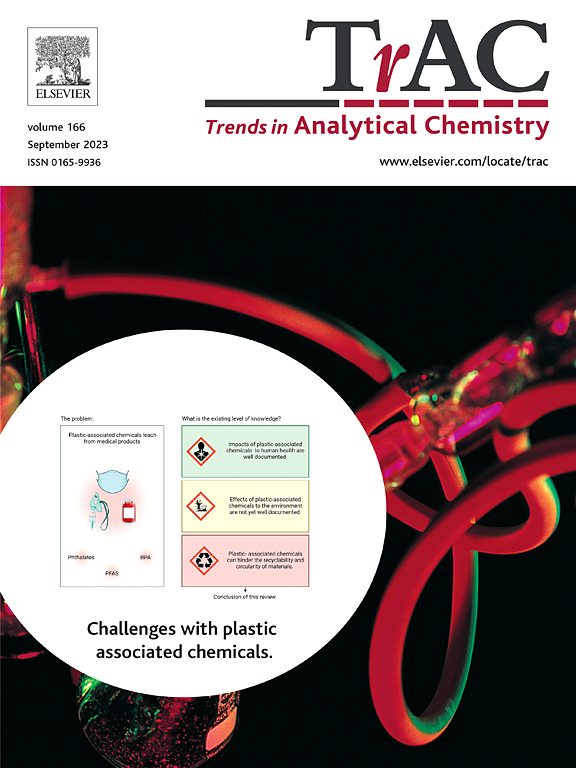Advances in DNA damage detection: Current progress, challenges, and future directions
IF 12
1区 化学
Q1 CHEMISTRY, ANALYTICAL
引用次数: 0
Abstract
DNA is much continuously exposed to endogenous and exogenous agents that induce damage, potentially leading to genomic instability, disease development, and aging. Detecting DNA damage and understanding associated repair mechanisms are essential for advancing diagnostic techniques, biosensors, and therapeutic interventions. Since DNA damage varies, the desired measurement approach differs, highlighting the need for an unbiased exploration of DNA damage biomarkers, along with a critical analysis of various quantification methods. Therefore, this review aims to provide a comprehensive overview of current methodologies for measuring DNA damage, focusing on direct detection of DNA lesions and indirect measurement of repair enzymes. We discuss various analytical, biochemical, and imaging techniques, identify the limitations in existing technologies and suggest future directions. This review emphasizes the growing need for advanced tools to measure DNA damage, which is set to play a transformative role in early disease detection, optimizing treatments, and supporting safe human space exploration.
DNA损伤检测的进展:当前进展、挑战和未来方向
DNA持续暴露于内源性和外源性物质中,这些物质会诱发损伤,可能导致基因组不稳定、疾病发展和衰老。检测DNA损伤和了解相关修复机制对于推进诊断技术、生物传感器和治疗干预至关重要。由于DNA损伤各不相同,所需的测量方法也各不相同,因此需要对DNA损伤生物标志物进行公正的探索,并对各种量化方法进行批判性分析。因此,本文旨在全面概述当前DNA损伤测量方法,重点是DNA损伤的直接检测和修复酶的间接测量。我们讨论了各种分析、生化和成像技术,确定了现有技术的局限性,并提出了未来的发展方向。这篇综述强调了对测量DNA损伤的先进工具的日益增长的需求,这将在早期疾病检测、优化治疗和支持安全的人类太空探索中发挥变革性作用。
本文章由计算机程序翻译,如有差异,请以英文原文为准。
求助全文
约1分钟内获得全文
求助全文
来源期刊

Trends in Analytical Chemistry
化学-分析化学
CiteScore
20.00
自引率
4.60%
发文量
257
审稿时长
3.4 months
期刊介绍:
TrAC publishes succinct and critical overviews of recent advancements in analytical chemistry, designed to assist analytical chemists and other users of analytical techniques. These reviews offer excellent, up-to-date, and timely coverage of various topics within analytical chemistry. Encompassing areas such as analytical instrumentation, biomedical analysis, biomolecular analysis, biosensors, chemical analysis, chemometrics, clinical chemistry, drug discovery, environmental analysis and monitoring, food analysis, forensic science, laboratory automation, materials science, metabolomics, pesticide-residue analysis, pharmaceutical analysis, proteomics, surface science, and water analysis and monitoring, these critical reviews provide comprehensive insights for practitioners in the field.
 求助内容:
求助内容: 应助结果提醒方式:
应助结果提醒方式:


